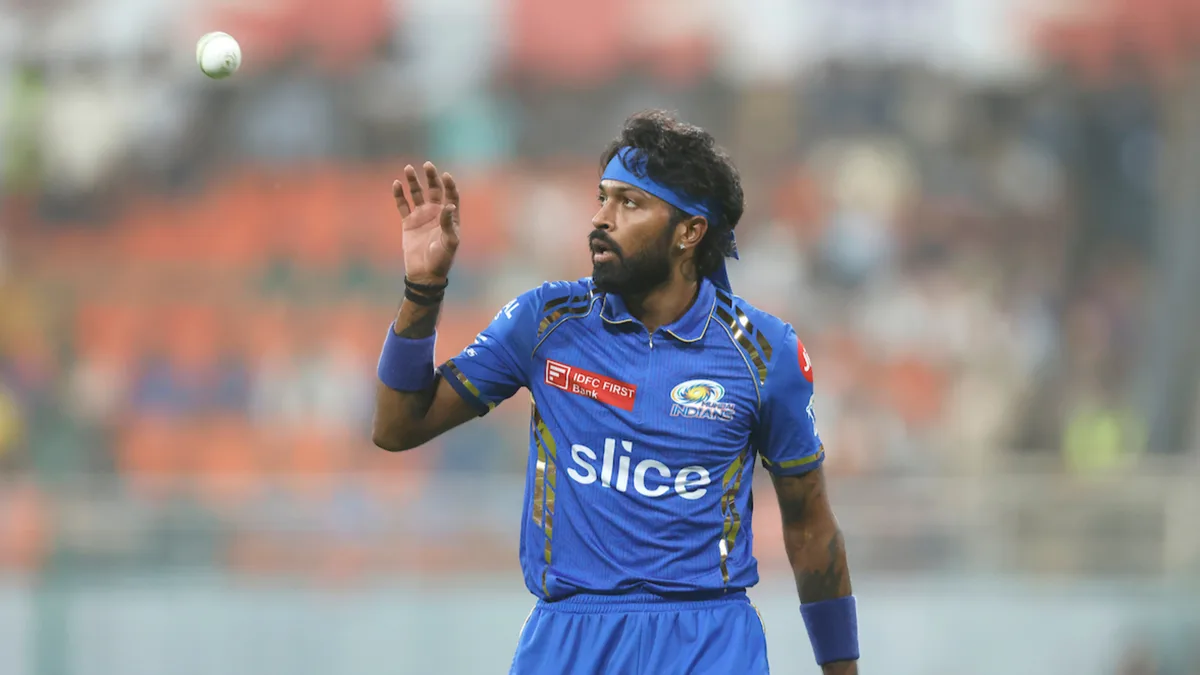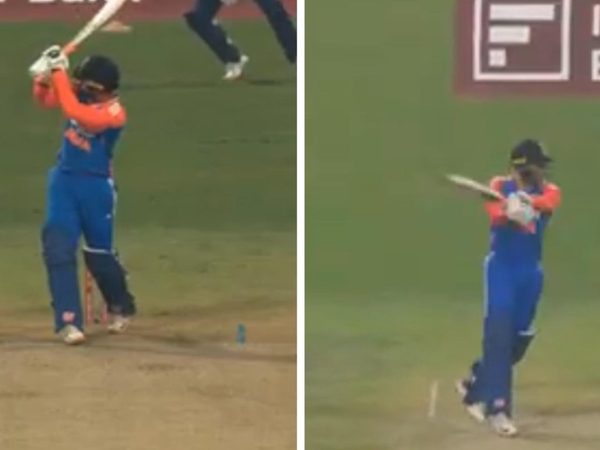
Mumbai Indians have had a dismal IPL 2024 campaign so far. At the core of their troubles lies the inconsistent decision-making from new captain Hardik Pandya, writes Naman Agarwal.
Subscribe to the Wisden Cricket YouTube channel for post-match analysis, player interviews, and much more.
On the third ball of the 17th over of Mumbai Indians’ chase against Gujarat Titans, Tilak Varma refused a single to Tim David even as the ball rolled along the ground towards deep mid-wicket. Tilak was shielding David from Rashid Khan, who was bowling his last over of the night.
In an ever-evolving cricket landscape that is hyper-fixated on match-ups, it is no longer a total surprise to see an accomplished batter being protected from what would theoretically be a negative match-up.
Despite the seemingly canny ploy, Rashid’s over brought only three runs as Mumbai eventually fell short, failing to chase down 169 in their first match of the season. Hardik Pandya, leading MI for the first time after an infamous transfer, said that he backed Tilak after the game: “I think Tilak felt that that was the better idea at that point of time. I completely back him, not an issue. 13 games to go.”
Only that Pandya wouldn’t have needed to come out and defend Tilak if he had come out to bat ahead of David himself. By the time Pandya did, MI needed 27 off 12, and despite a brief cameo of 11 off four, he wasn’t able to take them over the line.
That turned out to be the first of many major tactical mis-steps Pandya would commit as MI captain in a season that sees them languish in eighth place on the points table nearly two-thirds of the way into IPL 2024.
In the very next game against a new-look, rampaging Sunrisers Hyderabad, Pandya would commit the cardinal sin of holding the best bowler of the team back for long enough to let the game slip away. As Travis Head and Co. were smashing everyone to the smithereens, Jasprit Bumrah was surprisingly nowhere to be seen between the fourth and the 13th over, a period where SRH scored 128 runs. On the other hand, by the 14th over, Pandya had completed his quota of four overs for figures of 1-46.
Where is Jasprit Bumrah?? Game nearly done and your best bowler has only bowled ONE over! #SRHvMI
— Tom Moody (@TomMoodyCricket) March 27, 2024
Against CSK at Wankhede, Pandya chose to bowl the final over of the innings ahead of Akash Madhwal, the designated death bowler for MI alongside Bumrah. MS Dhoni tore into him, much to the delight of every CSK and neutral fan as well as those MI fans who were yet to accept Pandya as the leader of their side ahead of Rohit Sharma. He conceded 26 and MI lost by 20.
Then in Jaipur, Gerald Coetzee was given only two overs, the second of which came in the 16th. By then, RR had run away with the chase of 180, thanks largely to Yashasvi Jaiswal’s return-to-form century.
Between all these instances of sub-optimal usage of players in the team, Pandya has himself tried to essay various roles with both bat and ball, indicating a lack of clarity of thought. After demoting himself below David in the first game of the season, he has promoted himself several times, only to end up playing inexplicable knocks where either he hasn’t gone hard enough in the first place (10 off 10 against RR) or he has tried but failed (24 off 20 vs SRH, 2 off 6 vs CSK). The story has been similar with ball in hand for him. Pandya has oscillated between taking the new ball ahead of specialist new-ball bowlers and being a seventh-choice bowler, with periods of no bowling in between.
Being out of form as a player is normal, but what has ailed Pandya the captain, who seemed to be so at home in the same role at Gujarat Titans for the last two years?
At GT, Pandya had the luxury of having no expectations. A new franchise presented him with a blank slate to build any sort of legacy for himself that he wanted. Their coaching set-up was an expansive one but it was clear who was at the helm of affairs: Ashish Nehra. With him, Pandya forged a solid combination and took them to one trophy and a runners up spot in his two years at the new franchise.
Mumbai Indians, however, come with the weight of having five IPL trophies behind them. The distribution of authority among the coaching staff is also perhaps slightly more even than at GT. And they have a culture which puts winning at all costs on a pedestal, as was recently confirmed by Ambati Rayudu. In fact, Pandya himself placed the team environment of CSK above MI when talking about the differences between the two last year.
“There are two kind of success you can get. One is get the best people possible from A to B which I feel MI had, those few years where we’ve won, or have the best environment possible for you to win which has been a CSK type where no matter who the players are, they get the best out of them. That was more inspiring for me. To not get the best players but to get the best environment,” Pandya said.
The fact that MI are undergoing a “transition period” in the words of head coach Mark Boucher, might also be playing a part in Pandya trying too hard to forge a new identity for himself in a set-up which was ruled by his predecessor for a decade, though it should be added that Mumbai are on track for a fourth consecutive trophy-less year. That might explain why several obvious tactical plays have been missed throughout the season. Perhaps Pandya’s feeling a need to be different.
To his credit, he is succeeding at being different, just not the kind of different that is helping Mumbai Indians at the moment.
They have six more games to go, of which they can afford to lose only one if they are to qualify for the play-offs. As much as Pandya’s return to form, with either bat or ball or both, will help MI, it’s not an easy transformation to make midway through a tough season. What can and does need to change quickly, though, is the frequency of basic errors in decision-making. Without that, the second half for MI might turn out to be longer than the first.








